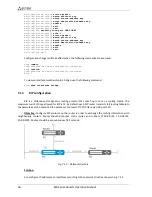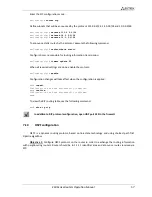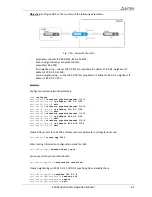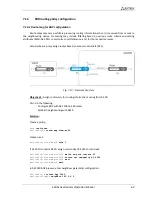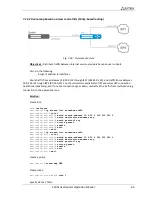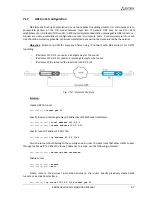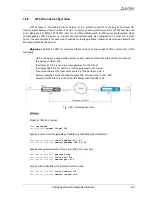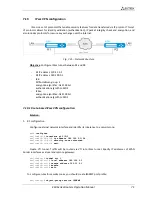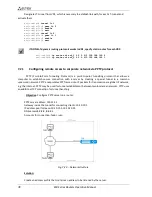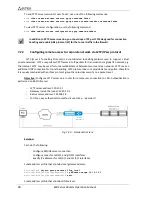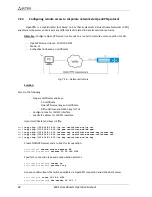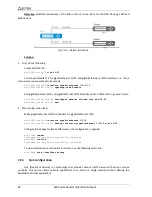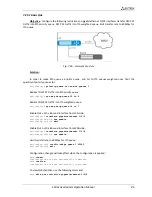
70
ESR Series Routers Operation Manual
Specify identifiers for session inside the tunnel for local and remote sides:
esr(config-l2tpv3)#
local session-id 100
esr(config-l2tpv3)#
remote session-id 200
Define the inherence of L2TPv3 tunnel to a bridge that should be mapped to remote office network
(for bridge configuration, see Paragraph 7.11):
esr(config-l2tpv3)#
bridge-group 333
Enable previously created tunnel and exit:
esr(config-l2tpv3)#
enable
esr(config-l2tpv3)#
exit
Create sub-interface for switching of traffic coming from the tunnel into LAN with VLAN id 333:
esr(config)#
interface gi 1/0/2.333
Define the inherence of sub-interface to a bridge that should be mapped to LAN (for bridge
configuration, see Paragraph 7.11):
esr(config-subif)#
bridge-group 333
esr(config-subif)#
exit
To apply configuration changes, execute the following commands:
esr#
commit
Configuration has been successfully committed
esr#
confirm
Configuration has been successfully confirmed
When settings are applied, traffic will be encapsulated into the tunnel and sent to the partner
regardless of their L2TPv3 tunnel existence and settings validity.
Tunnel settings for the remote office should mirror local ones. IP address 183.0.0.10 should be used
as a local gateway. IP address 21.0.0.1 should be used as a remote gateway. Encapsulation protocol port
number at the local side should be 520, at the partner's side
—
519. Tunnel identifier at the local side
should be equal to 3, at the partner's side
—
2. Session identifier inside the tunnel should be equal to 200,
at the partner's side
—
100. Also, the tunnel should belong to a bridge that should be connected with the
partner's network.
To view the tunnel status, use the following command:
esr#
show tunnels status l2tpv3 333
To view sent and received packet counters, use the following command:
esr#
show tunnels counters l2tpv3 333
To view the tunnel configuration, use the following command:
esr#
show tunnels configuration l2tpv3 333
In addition to tunnel creation, you should enable UDP inbound traffic in the firewall with
source port 519 and destination port 519.

